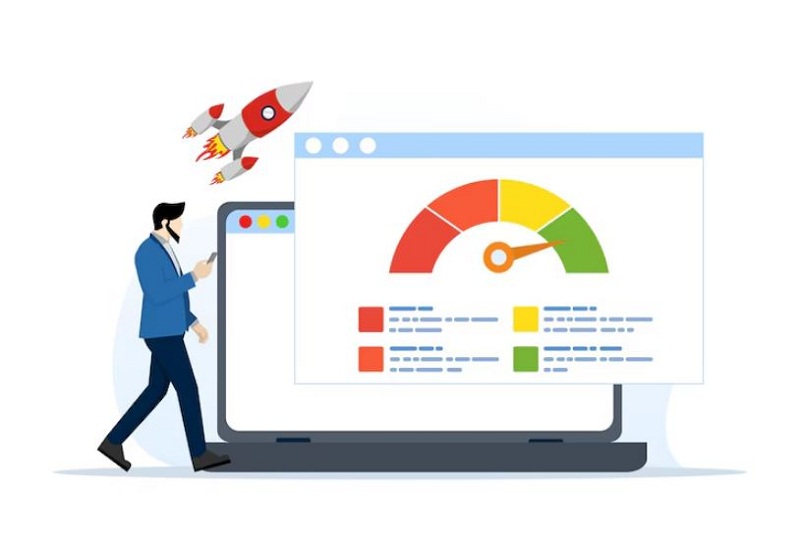On March 12, Google’s Interaction to Next Paint (INP) metric replaced First Input Delay (FID) as a Core Web Vital. INP measures the time between a user hitting a button and the browser rendering the modified pixels. The goal is to catch interaction that FID missed.
Since INP is now a Core Web Vitals indicator, not optimizing for it might impact your website’s performance and rankings. Let’s understand INP and how to optimize your site for it.
What’s INP?
Interaction to Next Paint (INP) measures website responsiveness to user interactions. Anything a user does on a website, from touching a touch screen to clicking a keyboard key, is an interaction. Google’s INP score measures a page’s interaction latency by picking one of the longest user interactions. INP has the worst latency for pages with less than 50 interactions. INP is usually the 98th percentile of interaction latency for websites with multiple interactions.
Here’s how Google defines a good or poor INP score:
Your page is responsive if its INP is under 200 milliseconds. Your page’s responsiveness requires improvement if its INP is 200–500 milliseconds. An INP above 500 milliseconds indicates poor page responsiveness.
INP vs. FID: which is tougher to tackle?
Google’s First Input Delay (FID) metric only evaluates the first interaction with unresponsive sites. Google claims that INP provides a more complete picture of a site’s responsiveness by measuring interactions from page load to user exit. INP is a better predictor of site responsiveness than FID due to its complete assessment. Due to its nature, INP is tougher to tackle than FID since your code must ensure user responsiveness throughout their trip, not only on initial load. Since JavaScript handles numberless site interactions, your website needs to be loaded carefully when it comes to optimal efficiency.
This said errand might even be harder on mobile. On mobile, INP ratings are 35.5% lower than FID on average, according to a few industry and site network sites. The average loss in desktop performance throughout the sample was 14.1%.
Here’s how you can optimize Interaction to Next Paint (INP)?
The key to optimizing Interaction to Next Paint (INP) lies in enhancing the overall responsiveness and user experience (UX) of a website. Here are some quick tips:
Reduce Page CPU Processing
- Running code asynchronously: Run additional code asynchronously to refresh the UI immediately, even if background work is happening.
- Website profile code: Use DevTools’ performance profiler to study the main thread and find optimization opportunities.
- Assess third-party scripts: Make a detailed assessment of the influence on site responsiveness and customize or delay them.
Reduce Input Delay
- Bring down the input latency – By breaking up main thread workloads and reducing background CPU activity.
- TBT: Total Blocking Time – Use this measure in lab data to find background activities impeding user interactions.
- Optimize third-party code: Explore ways to decrease or load third-party scripts when needed to reduce delays.
Improve Processing Time
- Efficient code execution – Find out where the browser spends the most time and improves your app.
- Prevent unnecessary renders– Avoid unnecessary component rendering in react
- Less layout work: If layout work uses a lot of CPU, decrease layouts and repaints.
Update UI before heavy processing
- Instant feedback: Before CPU-intensive activities, provide visual feedback (spinner)
- Use web workers: Web workers can handle extensive JavaScript processing off the main thread.
Stay Away from Blocking Dialogs
Non-blocking UI elements: to do it well, you need to replace all prompts including native alert and confirm. These prompts often become a roadblock for the main thread.
Speed Up Presentation
- Keep page updates simple: If rendering website content is sluggish, display crucial material first to provide the next frame faster.
- Queue interactions: Know how queued interactions may delay presentations and handle them well.
Go for the approaches driven by the best practices
- Regularly assess performance– Use Google PageSpeed Insights, Lighthouse, and RUM solutions to track your site’s performance.
- Keep CWVs updated- Track changes in fundamental web vitals data and modify optimization tactics.
These tactics may help you boost your website’s INP, making it more responsive and user-friendly. Remember that optimizing for INP needs continual monitoring and modifications depending on user engagement and website upgrades.
Concluding Remarks
A major metric for web page responsiveness is interaction to Next Paint (INP). It measures all user interactions’ delay, beyond First Input Delay (FID), to provide a complete picture of a site’s response time. The way your website manages user interactions may greatly influence its search engine optimization. Optimizing the INP of a highly dynamic website might seem to be an ongoing and challenging task. There exists an additional interaction that may be optimized. The inclusion of additional features exacerbates the existing workload. It is important to begin at a certain point. Hopefully, this post has initiated you on the correct path.

